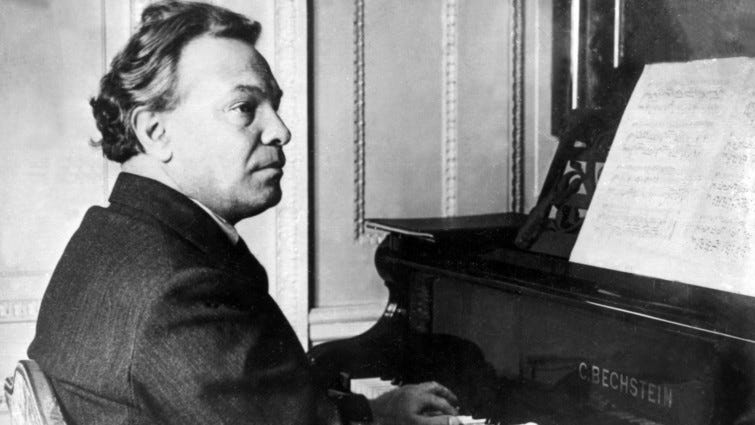
Ottorino Respighi, like Holst, is known mainly for one work. In Respighi’s case, to be fair, it’s three works that were composed separately but published together as the Roman Trilogy. They are, in order of composition, Fontana di Roma (Fountains of Rome), Pini di Roma (Pines of Rome), and Feste Romane (Roman Festivals). In his rather short life, however, he composed a considerable amount of incredibly varying types of music, now almost forgotten, for which he achieved considerable fame.
For the fiftieth anniversary of the Boston Symphony Orchestra in 1930, their esteemed music director, Serge Koussevitsky commissioned Respighi for a new composition. Respighi’s work, which was enthusiastically received at the time, is a wonderfully inventive theme and variations, showcasing every section of the orchestra — Metamorphoseon modi XII, tema e variazioni per orchestra.
Earlier, in 1929, Respighi proposed to orchestrate a set of piano pieces by Rachmaninoff. Koussevitsky premiered these incredible orchestrations, Çinq Études-Tableaux in 1931 with the Boston Symphony Orchestra.
Respighi was a gifted pianist and many of his early successes in the United States were as a soloist for his own compositions. His debut in the United States was as soloist for his Concerto in modo misolidio on December 31, 1925 at Carnegie Hall.
Respighi and his wife were greatly impressed by the music and culture of Brazil during a concert series in Rio de Janeiro in 1927. He vowed to return the following year with a suite based on this visit. His Impressioni Brasiliane (Brazilian Impressions) are yet one more example of his extraordinary ability to create unique sounds for the orchestra.
Respighi’s ability to write in any style is perfectly captured in his suite, Gli uccelli (The Birds). It is based on music from the 17th and 18th centuries, but in the end it’s his voice that is heard in every note of the score.
Respighi’s Trittico Botticelliano perfectly capture the famous triptych found at the Uffizi Gallery in Florence.
And, finally, his 1926 composition, Vetrate di chiesa (Church Windows) are some of the most evocative music he ever composed, every bit as grand as his Roman Trilogy.
